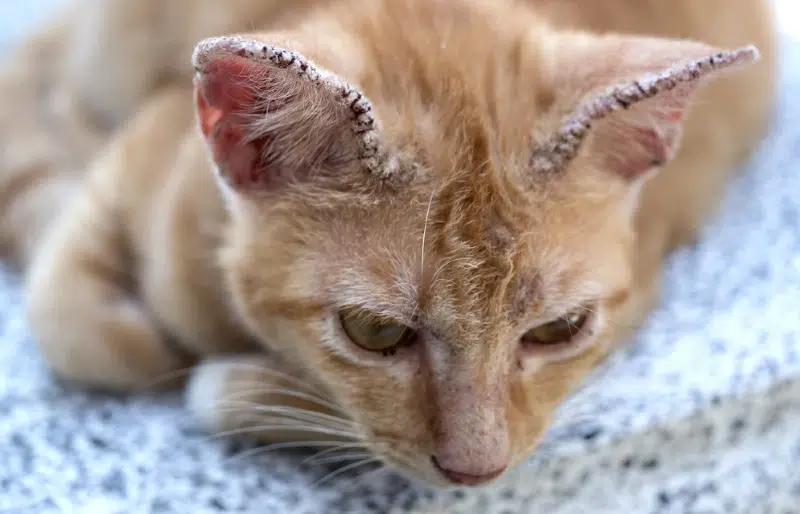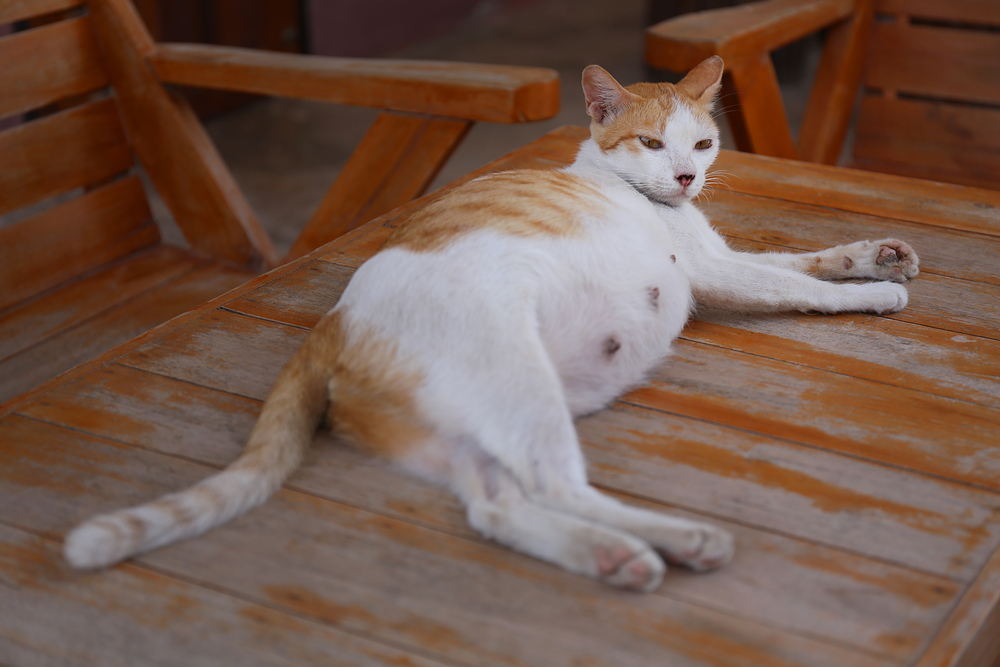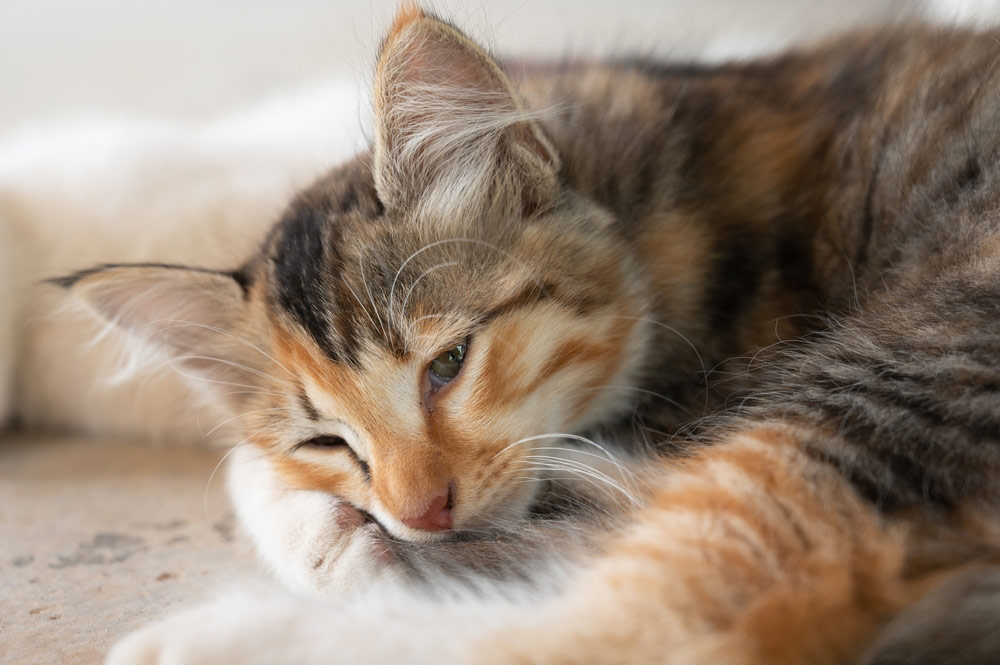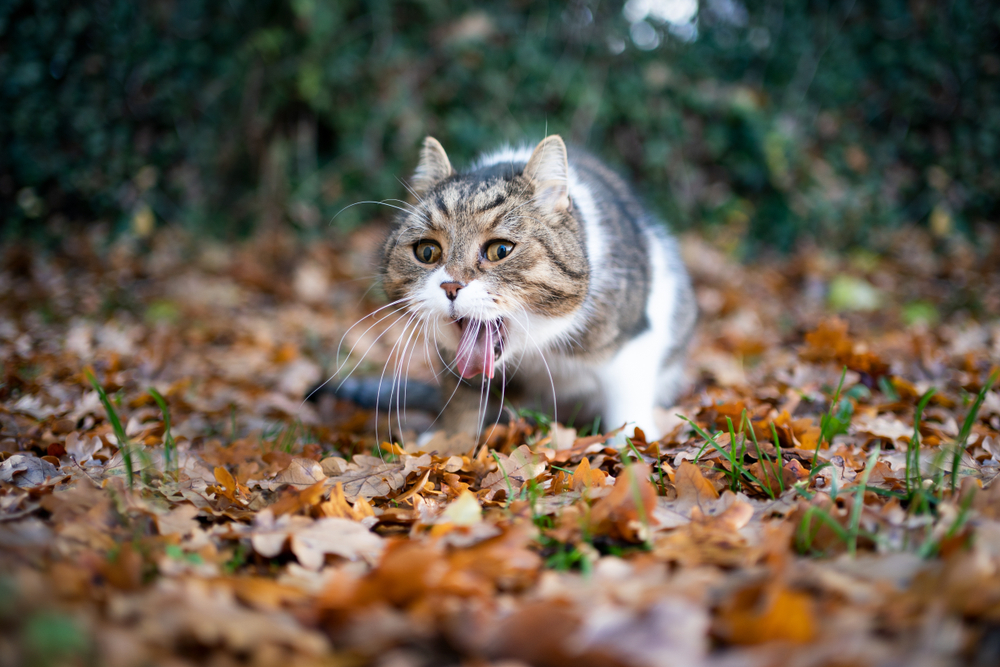Click to Skip Ahead
A fungal infection can be uncomfortable for a cat and, in some cases, can have a serious impact on a cat’s health and well-being. Fungal infections are infections caused by fungi, microscopic spore-producing organisms that are found in the environment. Health problems caused by fungal infections can vary greatly, ranging from skin infections to respiratory infections to serious, systemic infections putting a cat’s life at risk.
With some types of fungi, people in close contact with an infected cat could also be at risk for the infection.

What Is a Fungal Infection?
Fungal infections are infections caused by fungi, spore-producing organisms in the environment. Fungi produce spores that can infect hosts (animals or people) and cause health problems by infecting their bodies. Many fungi are found in the soil, with their infectious spores waiting for a host to pass by to accidentally breath in, ingest, or touch them.
In general, most healthy adult cats can fight off the fungal spores after exposure. Cats that are very young, have weakened immune systems, or are otherwise ill are more at risk for fungal infections and their secondary complications.
Many types of infectious fungi exist in the world; however, some are only found in certain environments and regions. Some fungi commonly infect domesticated cats, while others rarely infect domesticated cats. Fungal skin infections in cats are common, while generalized infections throughout the body are quite rare.
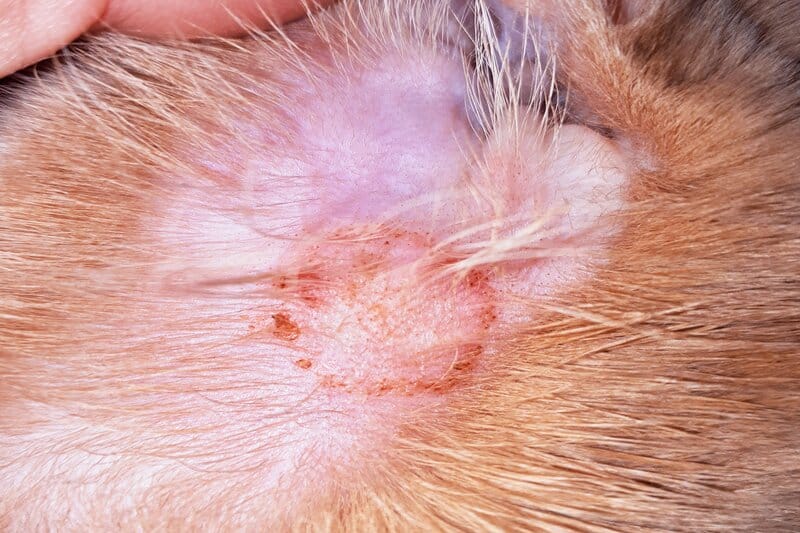
What Are the Signs of a Fungal Infection in Cats?
Again, the clinical signs of a fungal infection in a cat depend on the fungus as well as where the fungus is concentrated in the body, which can be anywhere from the skin to the respiratory system and beyond. Many of the most common clinical signs of a fungal infection are quite vague (non-specific) and can include the following:
- Skin issues (hair loss, skin lesions, cysts below the skin)
- Fever
- Poor appetite
- Weight loss
- Depression
- Anemia
- Exercise/physical activity intolerance (inability to sustain physical activity)
- Lung/respiratory signs and infections (bloody nasal discharge, swelling underneath the nose, coughing, difficulty breathing)
- Eye troubles, including blindness
- Neurological signs (seizures, paralysis, circling)
- Bladder infections
What Are the Causes of Fungal Infections in Cats?
Below are some of the most common fungal infections to affect cats:
- Aspergillosis
- Blastomycosis
- Candidiasis
- Coccidioidomycosis
- Cryptococcosis
- Dermatophytosis (ringworm)
- Histoplasmosis
- Mycetomas
- Phaeohyphomycosis
- Rhinosporidiosis
- Sporotrichosis
A common fungal infection in cats is dermatophytosis, known as “ringworm”. It is not a worm but a microscopic fungus that can cause cat skin infections. Some cats are considered asymptomatic carriers of ringworm, meaning they carry the fungus but do not have typical clinical signs like hair loss or crusty skin lesions.
Other fungal infections that can be problems for cats include coccidioidomycosis, blastomycosis, and histoplasmosis. All three of these fungi are found in the environment in certain regions of North America. They can cause various problems, including skin/soft tissue infections, respiratory signs, gastrointestinal signs, and eyes.
Sporotrichosis is a rare fungus known to cause serious infections in cats, humans, and other mammals. Recently, public health warnings regarding the risk for cat-transmitted sporotrichosis have been in Brazil and neighboring countries. The fungus typically causes skin lesions (nodules and ulcers) but can also infect the respiratory tract, lymph nodes, and nervous system. This fungus causes disease when a cat’s injured skin comes into contact with plant material that is contaminated with the fungus.
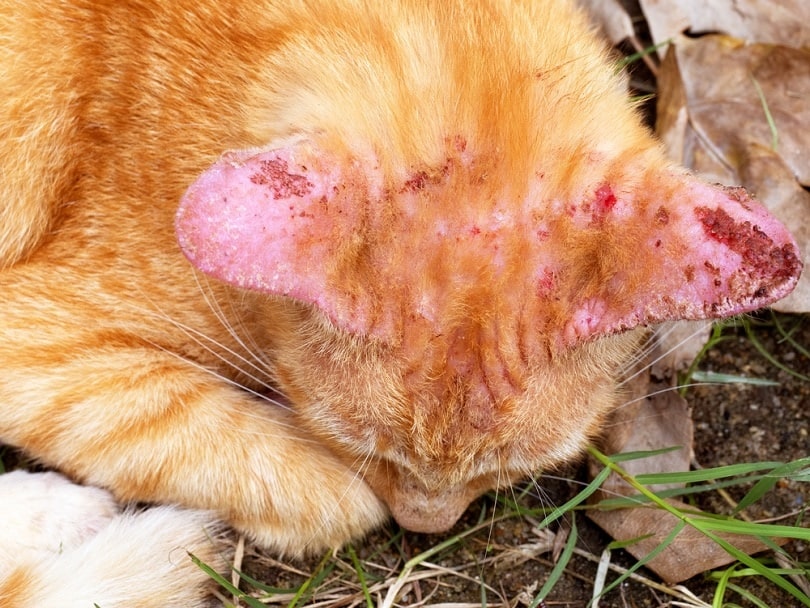
What About Fungal Toxicosis in Cats?
Cats can also become sick with “fungal toxicosis” when a cat ingests fungi or molds that release toxins (mycotoxins) that cause damage to the body. Fungal toxicosis generally occurs in warmer climates or seasons when fungi can proliferate on food and grains. As mycotoxins can impact different internal systems, clinical signs can vary widely from gastrointestinal upset and respiratory signs to neurological signs and can vary from mild to severe in intensity. Some of the most common types of fungi to cause fungal toxicosis include Aspergillus mold and Fusarium fungus.
How Do I Care for a Cat With a Fungal Infection?
Depending on the type of fungal infection and where it is causing problems (e.g., skin, nasal cavity, respiratory tract, internal organs, nervous system), your cat will likely need to be given an anti-fungal treatment. This can be given as an oral medication or can be applied to the skin. In most cases, oral medication is required to fully clear the infection.
Like antibiotics, it is important that an anti-fungal treatment is given correctly and according to the prescribing veterinarian’s directions. Stopping the treatment early or inconsistently giving the medication can lead to infections that are more difficult to get rid of. In many cases, a long course (several weeks) of medication is often required for successful treatment.
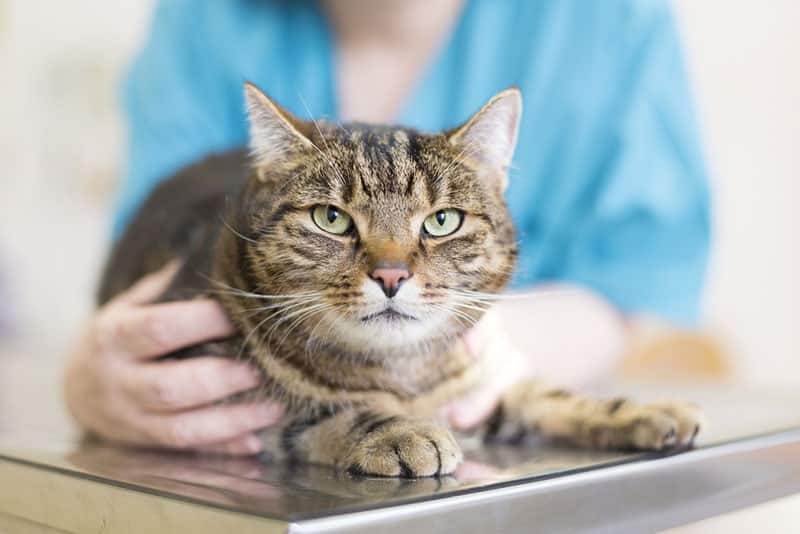

Frequently Asked Questions (FAQs)
How is a fungal infection diagnosed?
In some cases, fungal infections, like ringworm, can be fairly easy to diagnose. It is typically diagnosed through visual inspection of the skin, using a special “Wood’s lamp” to illuminate the fungus on the skin, and through a laboratory test (culture or PCR). Once a diagnosis is confirmed by a laboratory, treatment is initiated. Treatment is usually continued until two consecutive negative lab tests have been confirmed.
In other cases, some fungal infections can be quite difficult for a veterinarian to diagnose. Some fungi are rare or only found in certain regions, and many times, they cause quite vague signs. If your cat is showing signs of a fungal infection, your veterinarian can run a few tests to come to a diagnosis, including baseline blood and urine tests and in some cases, sampling of certain tissues or fluids (e.g., nodules, skin lesions). In some situations, imaging may need to be performed (e.g., x-rays of the chest or abdominal ultrasound).
Can cats spread fungal infections to humans?
Unfortunately, many fungi that can infect cats are considered “zoonotic”, meaning people can become infected as well. One classic example is an animal caretaker developing an itchy, red, scaly skin lesion after handling cat(s) infected with ringworm. In most cases, these zoonotic ringworm cases are mild in humans, but for someone who has a compromised immune system, these infections can cause bigger problems.
For fungal infections like blastomycosis, coccidioidomycosis, and histoplasmosis, fungi can infect humans when exposed to the spores in the environment; however, infected cats generally aren’t considered contagious to humans.
Sporotrichosis is a zoonotic fungal infection that can infect cats, humans, and other mammals. Handling a cat infected with the fungus does pose a risk to cat owners, veterinary professionals, and other animal caretakers. People can take special precautions by wearing special gowns, gloves, masks, and eye protection when handling cats sick with sporotrichosis.
To avoid zoonotic spread of fungal infections, it is important to follow a veterinarian’s medical treatment, limit contact with infected pets, limit contact between infected pets and other animals, and clean the environment according to recommended guidelines.
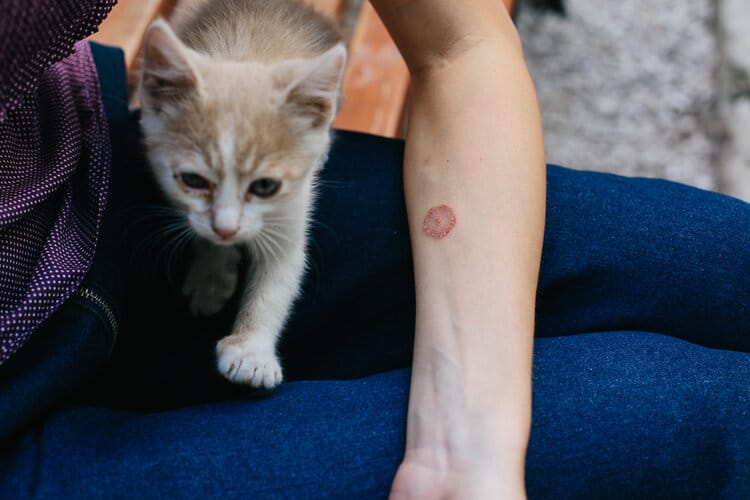

Conclusion
Fungal infections in cats are caused by microscopic organisms called fungi. Cats are typically exposed to infectious fungal spores in the environment. In most cases, healthy adult cats can fight off a fungal infection; however, in some cases, an immunocompromised cat can become ill, or more dangerous fungi can cause illness in a cat.
Signs of fungal infection in cats can vary greatly, depending on the fungi, location of the infection, and health status of the cat. Some infections can cause mild skin lesions, while others can cause serious systemic infections putting the cat’s life at risk. Some fungi are zoonotic and can cause illness in humans as well. If you suspect your cat is infected with a fungus, it is important to visit your veterinarian for further evaluation and care.
Featured Image Credit: Ameena Matcha, Shutterstock

